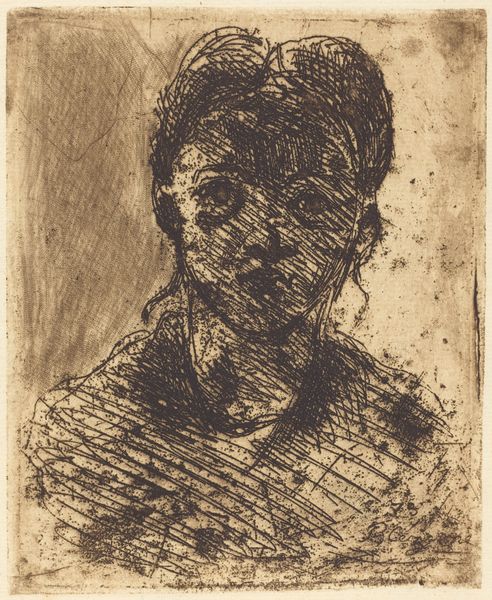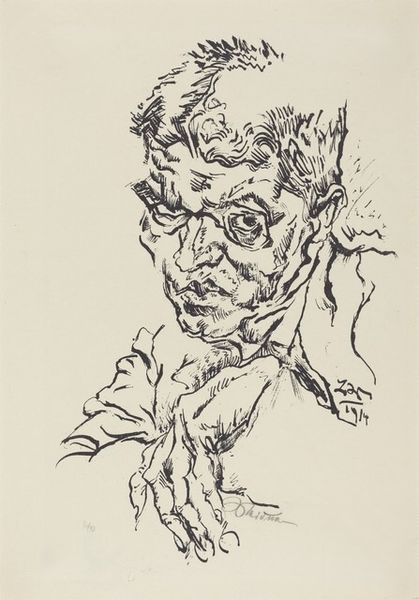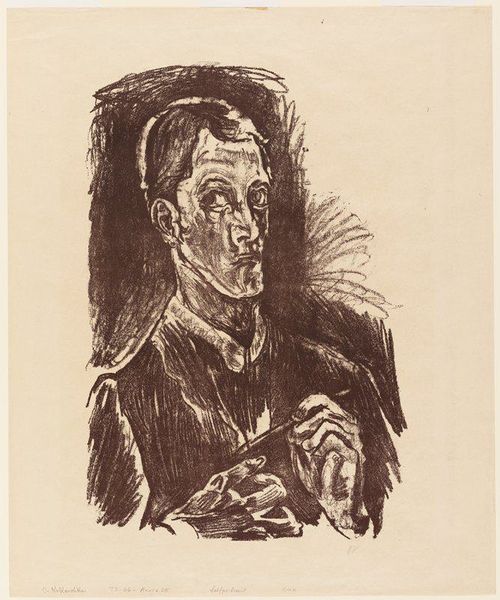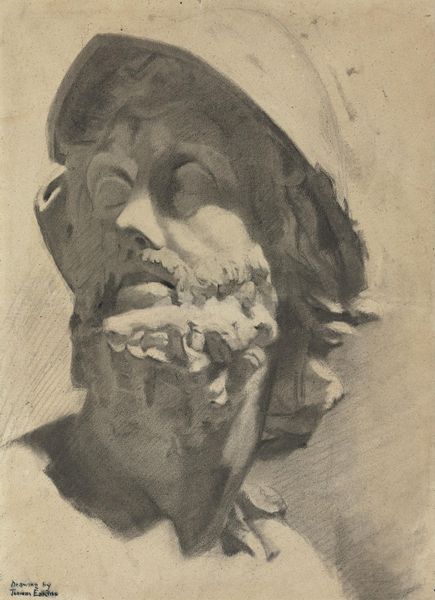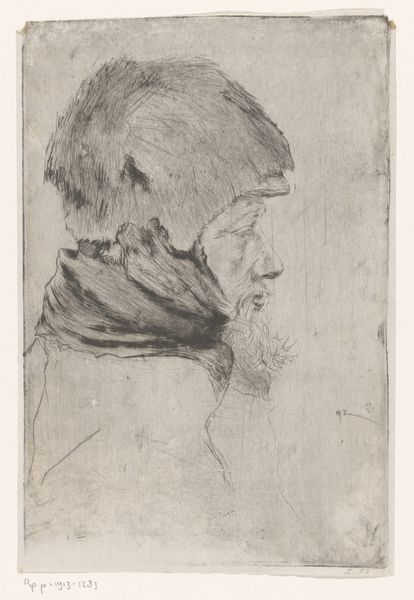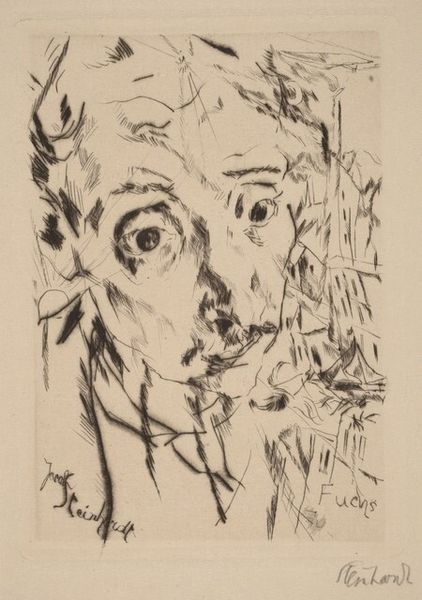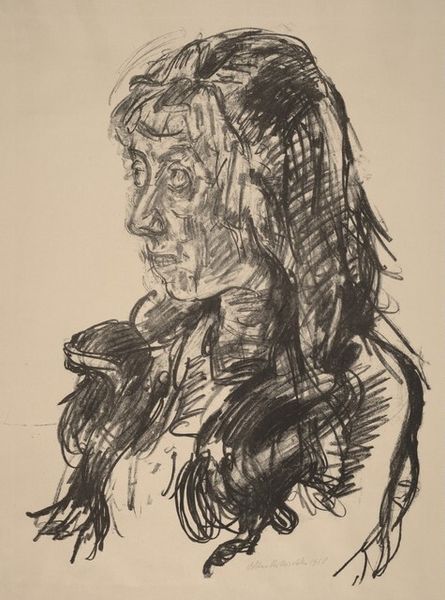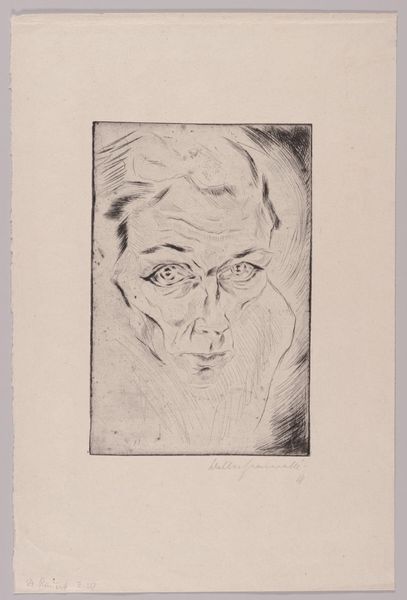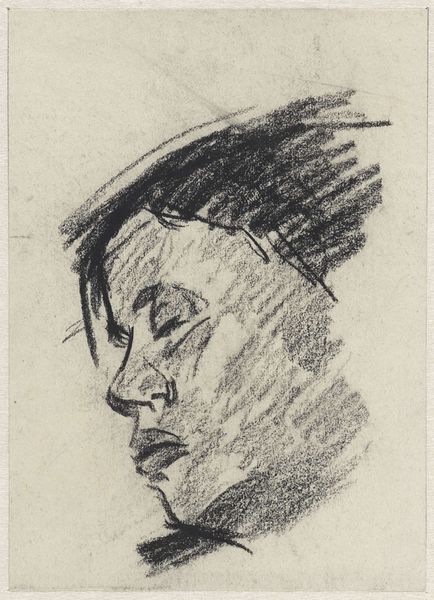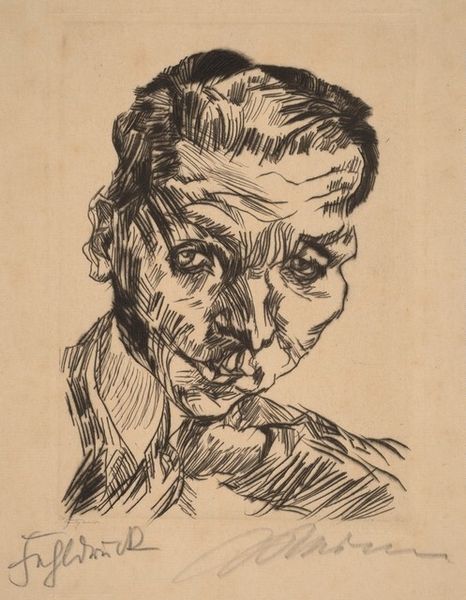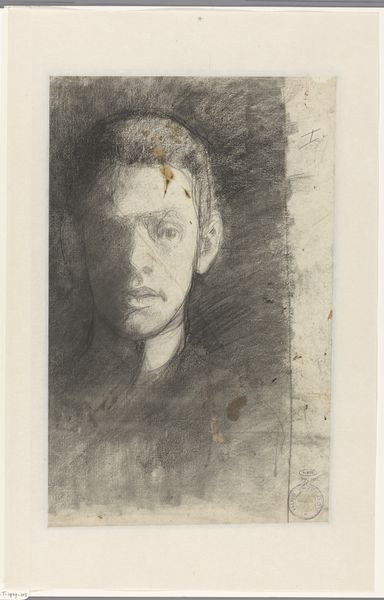
drawing, pencil
#
portrait
#
drawing
#
self-portrait
#
pencil drawing
#
pencil
#
expressionism
#
portrait drawing
Copyright: Public domain US
Curator: We're looking at Josef Albers' "Self Portrait," created in 1918. It’s a pencil drawing rendered in the style of Expressionism. Editor: It’s stark, almost severe. The use of angular lines gives the face a fragmented quality, but not in a chaotic way. There's a palpable sense of unease conveyed through the tight linework. Curator: Albers created this portrait during a turbulent time in Germany's history. The expressionistic style he employs speaks to the psychological turmoil that pervaded society after World War I. Artists used expressive, distorted forms to capture the deep anxieties of that era, including social upheaval and loss of traditional values. This self-portrait is evidence of Albers' struggle as a young man, grappling with these existential anxieties in post-war Germany. Editor: The formal construction fascinates me. Note how he renders light and shadow using almost architectural planes. There’s very little blending; it’s all hard edges defining form. I am captivated by his linear approach to volume. You know, semiotically, a line is loaded with meaning in artmaking. Curator: Right, these choices emphasize the breakdown of order. Looking at Albers, do we see the questioning of male identity of the time? Is he trying to show a man unburdened of societal expectations or the heavy burden of masculine responsibility during such chaotic times? His art could represent the psychological burden on returning soldiers or the disillusionment of a generation. Editor: I think the real essence here lies in Albers' skill in portraying emotional states with basic geometric shapes. You almost don't notice it because the overall portrait is clearly figurative, but you will begin to see that the image slowly falls into pure shapes if you blur your vision slightly. He masterfully uses texture to draw the eye into the piece to create an experience that speaks to our emotions without using heavy visual cues or theatrical artifice. Curator: Thank you, that was quite helpful. It gave me a different view of the portrait and how the linear work shows how one might view one’s own life journey and what to come as a kind of self prophecy, too. Editor: I agree. Hopefully, we have encouraged people to view works of art using form as one mode to uncover meaning.
Comments
No comments
Be the first to comment and join the conversation on the ultimate creative platform.
